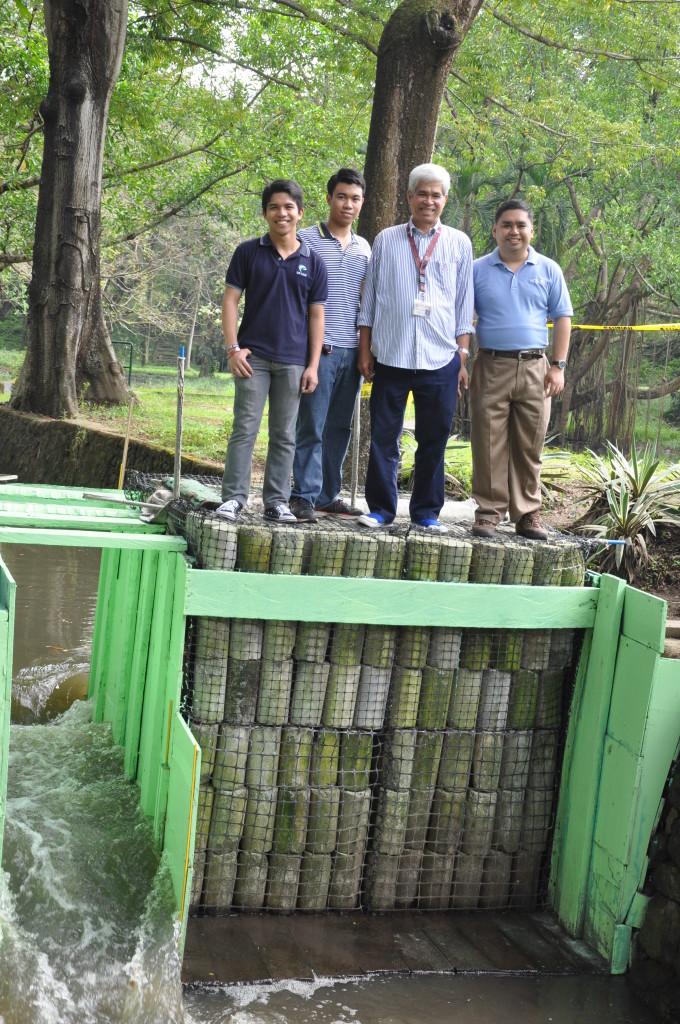|
The dam’s frame consists of gabion cages: wire mesh baskets filled with sturdy columns of recycled concrete cylinders or rocks. |
|
Designed by a team from the University of the Philippines Diliman (UPD), the “Gaia dam” could control or prevent flooding from torrential rains on farms, along rivers and in coastal areas by minimising and re-routing the flow of water through storm runoff pathways.
Its main structural frame consists of gabion cages: wire mesh baskets filled with sturdy columns of recycled concrete cylinders or rocks, which provide stability against the hydrostatic forces pushing through the dam.
 Like a miniature hydroelectric power plant, the Gaia dam could divert water into the powerhouse where turbines are installed, yet do so less expensively than the concrete dams that are usually used for this purpose. Like a miniature hydroelectric power plant, the Gaia dam could divert water into the powerhouse where turbines are installed, yet do so less expensively than the concrete dams that are usually used for this purpose.
In addition, the dam is designed to release proprietary proteins and enzymes when water passes through its specialised core. Its proteins are designed to help crops absorb soil nutrients and minerals, while its enzymes would gradually dissolve the exoskeletons of insects and other pests that attack the crops, thereby acting as natural fertilizers and pesticides.
Thus the Gaia dam has the potential to help in the production of organic crops. The UPD research team is now exploring the possibility of creating a spin-off company to produce the Gaia dam and is seeking partners to license its technology. Meanwhile, the team plans to further develop the technology and build prototypes for Filipino farms. |